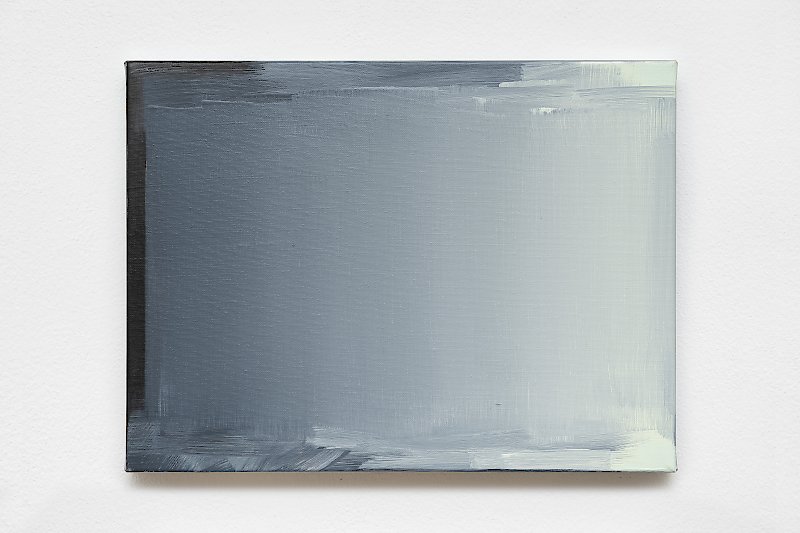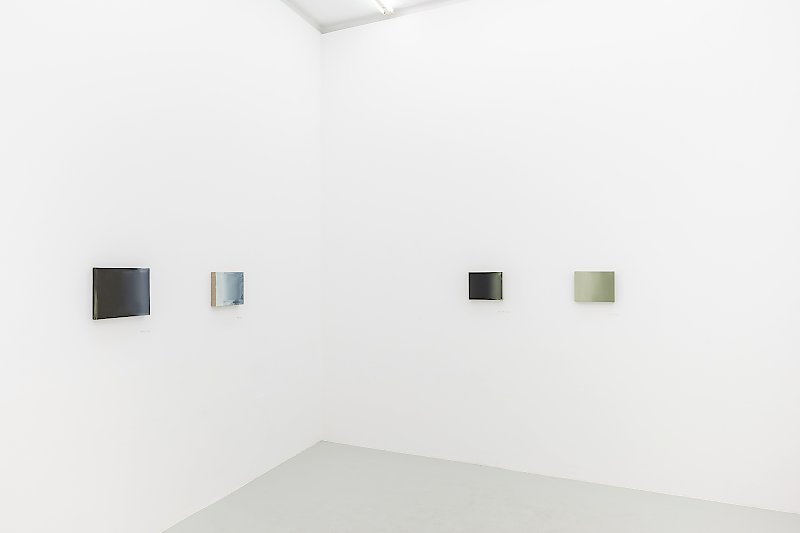Zur Ergänzung unseres sehr aristotelischen Gefühls des Staunens über das Wunder der Biodiversität muss etwas von jener
Ehrfurcht wiedererweckt werden.
Galerie Hubert Winter is pleased to present an exhibition of new work by New York based painter Nancy Haynes from the series library. Entitled a madeleine dipped in ink, her fifth show with the gallery includes abstractions titled after a roster of authors from various languages, including novelists and poets, essayists and theoreticians. Such figures as Toni Morrison, Samuel Beckett, Italo Calvino, and Lucy Lippard among others, inform Haynes own daily practice of reading and thinking. However, these paintings are not intended as portraits, despite their titles; rather, they account for, as the artist says, “What it is that makes us what we become”.
This new series continues her fascination with exploring literary figures and tropes via the slant view of abstract formalism that was evident in her more recent series to the poets, exhibited at Galerie Hubert Winter in 2017. Built to specific dimensions that resemble the proportions of an open book, these paintings extend Haynes’s conceptual investigation into the painted illusion of space as rendered through light and color. The sfumato technique, built of multiple layers of pigment and medium stretched thin, creates an array of subaqueous gradients of green and shifting registers of black and white. Emptied of any denotation, these paintings appear at first like blank pages, except on closer examination they are more akin to a palimpsest with traces of erasure and absence establishing a complex relation between surface and depth. The possibility that these accreted layers of paint are haunted by the trope of the memento mori seems urgent for Haynes’s investment in questioning how to memorialize impermanence. The fleeting thoughts that touch and go across the landscape of the mind, like the individual stokes on the surfaces of these paintings, drown in a sea of themselves. This is the sense in which Haynes states these paintings are about memory—not memories—not the event but the process.
Early in À la recherche du temps perdu, Proust, whose moment of involuntary memory is evoked in the title of the exhibition, states, “Perhaps the immobility of the things that surround us is forced upon them by our conviction that they are themselves, and not anything else, and by the immobility of our conceptions of them.” Haynes’s paintings evoke the mobility that engenders the possibility for a multiplicity of conceptions. Seizing upon abstract moments seemingly in motion, these works can stand for portraits, pages, or the mind, all at once. In another sense, these paintings evoke time’s passage, not a linear course of events, but the simplest unit of its duration. For in order to change or to move, time must elapse. As colors blend, emerging and submerging across a spectrum of hues, Haynes’s process and conceptual ethos merge to elaborate the illusory nature of time and its persistence even in absence. The dedication of these paintings to authors may seem incongruous at first, until we remember it is not always the specific language of these writers that stays with us, but the feeling they evoke. In this series, the rich emptiness in Nancy Haynes’s paintings pulsates with what psychoanalyst Melanie Klein described as our “longing for an understanding without words”.
Nancy Haynes (born 1947) is included in major American and European museums and private collections. The list is extensive and includes paintings at the Metropolitan Museum of Art and the Brooklyn Museum in New York, Museum of Fine Arts, Houston, the Bonnefantenmuseum in Maastricht, the Gemeentemuseum in Den Haag and others. Works on paper are, to name just a few, at the collection of the MoMA and the Whitney Museum of American Art in New York, at the Harvard Art Museum in Cambridge and the National Gallery of Art in Washington. She lives and works in New York, NY, and Huerfano Valley, CO.
Text by Miciah Hussey










